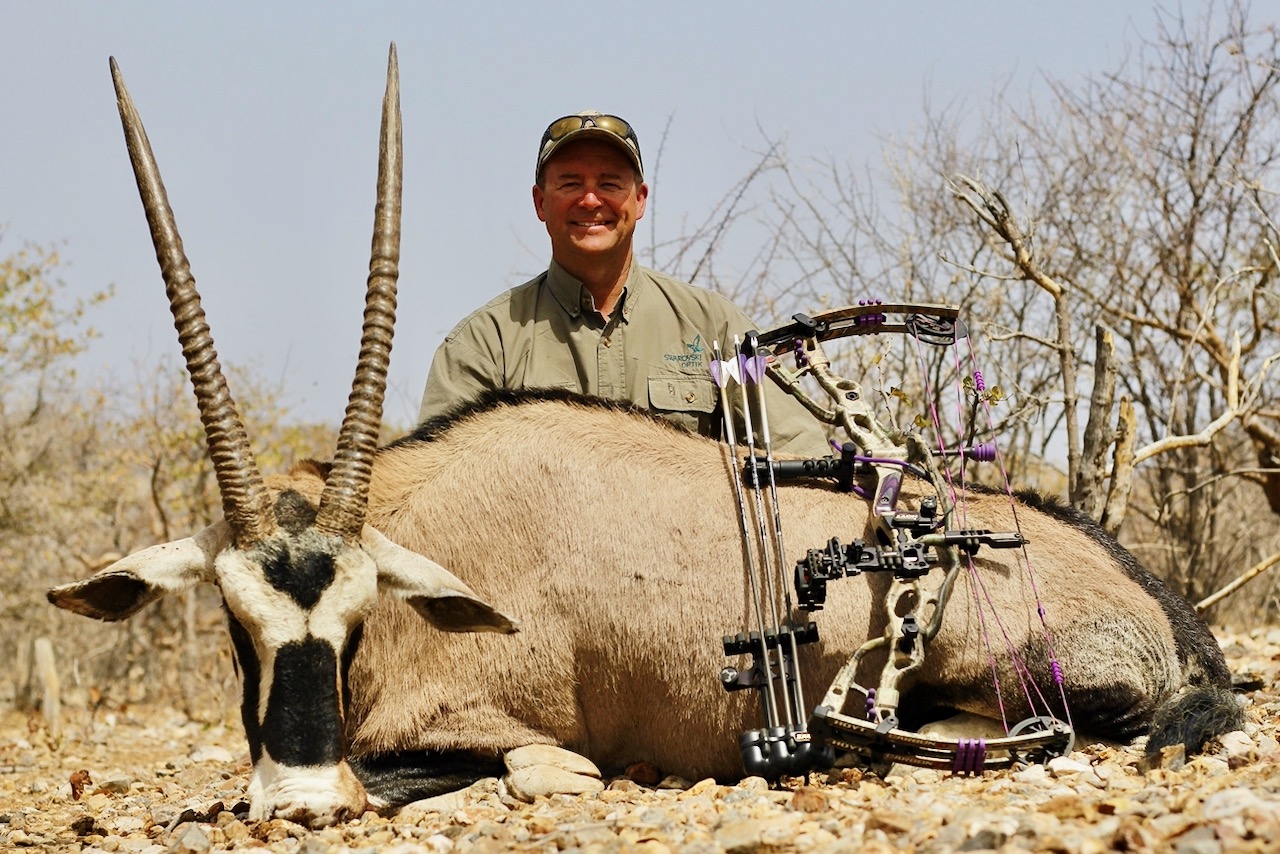LIGHTEN UP
Are heavy draw weights still necessary for bowhunting?
Advertisement
As I watched two gemsbok approach, it was obvious by his heavy, weathered horns that one was a mature trophy bull. So, I drew and waited patiently as he quartered away. I was shooting my wife’s bow—more on that in a minute—and questioning the light poundage because gemsbok are so thick-bodied and muscular, comparable to elk. Settling the sight pin on the crease behind his shoulder, I tightened my back muscles and released. The arrow hit perfectly, penetrating deep into the bull’s chest. After a short, 40-metre run, he collapsed.
I had to shoot my wife’s bow, purple accents and all, during that 2016 trip to Africa because someone back at the lodge had dry-fired mine, leaving it completely dysfunctional. I generally bring a backup bow, but not on that trip, so I had no choice—if I were going to bowhunt, I’d have to use my wife’s bow. On the bright side, it was the same model as mine, just with lighter custom limbs. Set at a draw weight of 48 pounds, the bow was also deadly accurate, as my wife had already taken a warthog, a baboon and a gemsbok with it.
Advertisement
In the end, I also successfully arrowed a hartebeest with that bow, making me realize bigger isn’t necessarily better when it comes to draw weight, especially when you keep the following factors in mind.
PICKING THE POUNDAGE
I got my first compound bow, a PSE Polaris, back in 1989. It was set at 78 pounds, and had a 28-inch draw length. I was 22 years old at the time, and bigger and stronger than I am today—I can’t imagine pulling that poundage now. Luckily, with today’s advances in bow technology, I don’t have to. Archery is a precision shooting sport. While muscle memory and fitness will always be part of the equation, there’s simply no need to pull extreme draw weights these days.
Advertisement
I know many competitive 3D archers and hunters who pull between 55 and 60 pounds. Most of the year, I pull 62 pounds. That’s comfortable and accurate for me, and I shoot well out to 90 yards. When I’m hunting during November’s extreme cold conditions, I even turn my bow down to 56 pounds. That helps compensate for the bulky clothing and inevitable fatigue during long frigid days on a stand.

With practice, most average-sized males between the ages 16 and 40 don’t have an issue pulling higher draw weights. Is it necessary? Not really. Is it better? The answer is layered. Faster bows will indeed shoot flatter, which means tighter sight pins and theoretically less margin of shooting error. Slower bows—or those set at lighter draw weights–—require sight pins to be set farther apart.
It’s also important to understand that bows shoot better at the upper limits of their limb window. For example, if you have 50- to 60-pound limbs, your bow will usually perform best set closer to 60 pounds.
LOWERING THE LIMIT
As it stands, most jurisdictions across North America have minimum draw weight requirements for bowhunting. The rationale is to ensure sufficient penetration for a quick kill. That magic number is generally 40 pounds, established decades ago when bows needed to load with greater poundage to deliver suitable downrange energy. Again, that’s all changed in recent years, with today’s more efficient limb and cam technology delivering stored energy better and faster.
Why is this relevant? A valid argument can be made to now lower the minimum draw weight requirement. Some suggest 30 pounds would be more suitable in order to accommodate youths just getting into bowhunting, as well as for people of smaller stature. For them, the 40-pound minimum can sometimes be a challenge.
Then there’s the whole age thing. With both males and females, our muscles atrophy as we age. As a result, most men will adjust their draw weights on average to between 50 and 60 pounds around the time they turn 50.
Still, for many bowhunters, the question remains, is a bigger draw weight really better? Perhaps it would better to ask if it’s really necessary. The laws of physics and the efficiency of today’s bows would suggest the answer is no.
